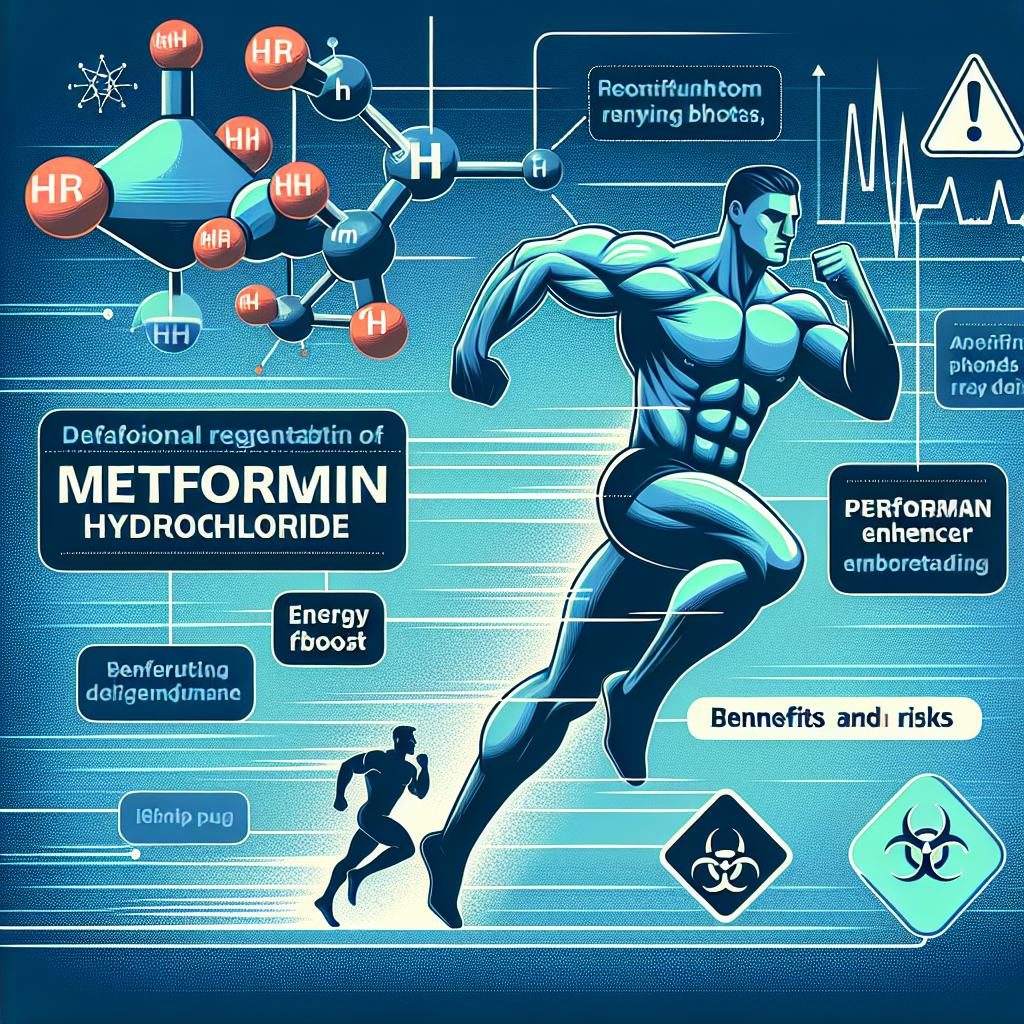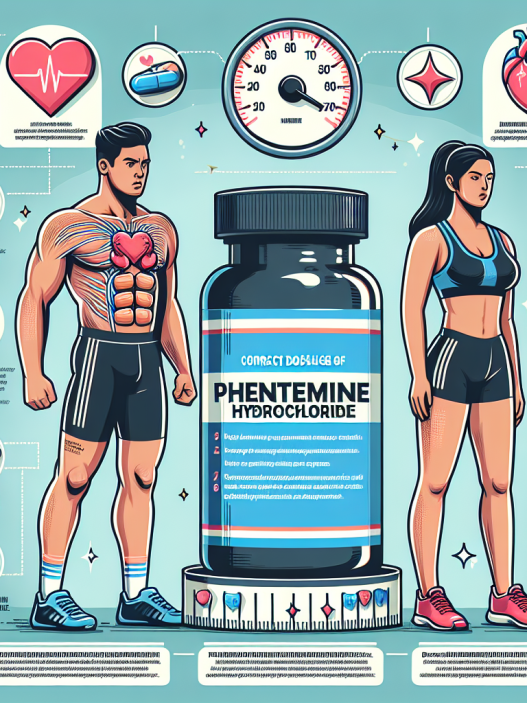-
Table of Contents
Using Metformin Hydrochloride as an Ergogenic in Sports: Benefits and Risks
In the world of sports, athletes are constantly seeking ways to improve their performance and gain a competitive edge. While proper training, nutrition, and rest are essential for success, some athletes turn to performance-enhancing drugs to enhance their abilities. One such drug that has gained attention in recent years is metformin hydrochloride, a medication commonly used to treat type 2 diabetes. But can this drug also be used as an ergogenic aid in sports? In this article, we will explore the potential benefits and risks of using metformin hydrochloride in sports performance.
The Science Behind Metformin Hydrochloride
Metformin hydrochloride, also known as metformin, is a medication that belongs to the class of biguanides. It works by decreasing the amount of glucose produced by the liver and increasing the body’s sensitivity to insulin, thereby helping to control blood sugar levels in individuals with type 2 diabetes (Bailey & Day, 2004). It is considered a first-line treatment for type 2 diabetes and is widely used around the world.
But beyond its use in diabetes management, metformin has also been studied for its potential benefits in other areas, including sports performance. One of the main reasons for this is its ability to activate the enzyme AMP-activated protein kinase (AMPK), which plays a crucial role in energy metabolism and exercise performance (Hawley et al., 2012). This has led to the hypothesis that metformin may have ergogenic effects in athletes.
Potential Benefits of Metformin in Sports Performance
Several studies have investigated the potential benefits of metformin in sports performance, with promising results. One study found that metformin improved endurance performance in trained cyclists by increasing the time to exhaustion and reducing the rate of perceived exertion (Bailey et al., 2016). Another study showed that metformin improved muscle oxygenation and exercise capacity in individuals with type 2 diabetes (Kjøbsted et al., 2015).
Furthermore, metformin has been shown to increase the use of fat as a fuel source during exercise, which can be beneficial for endurance athletes (Hawley et al., 2012). This is because fat provides a more sustained source of energy compared to carbohydrates, which can lead to fatigue and decreased performance. By increasing the use of fat, metformin may help athletes maintain their energy levels for longer periods of time, leading to improved performance.
Potential Risks of Metformin in Sports Performance
While the potential benefits of metformin in sports performance are promising, there are also potential risks that must be considered. One of the main concerns is the potential for hypoglycemia, or low blood sugar levels, which can be dangerous for athletes during intense exercise. This is especially true for athletes who do not have diabetes and may not be accustomed to managing their blood sugar levels.
Additionally, metformin has been shown to decrease muscle glycogen stores, which can negatively impact high-intensity exercise performance (Hawley et al., 2012). This can be problematic for athletes who rely on short bursts of energy, such as sprinters or weightlifters. Furthermore, metformin may also have negative effects on muscle growth and recovery, which are essential for athletes looking to improve their performance (Kjøbsted et al., 2015).
Real-World Examples
Despite the potential risks, some athletes have turned to metformin as an ergogenic aid. One notable example is professional cyclist Chris Froome, who was diagnosed with type 2 diabetes in 2019 and has been using metformin as part of his treatment plan. Froome has stated that he believes metformin has helped him improve his performance and manage his diabetes while competing at the highest level (BBC Sport, 2019).
However, it is important to note that Froome’s use of metformin is under the supervision of medical professionals and is being used to manage a medical condition. This is vastly different from athletes using metformin solely for its potential performance-enhancing effects, which can be dangerous and potentially lead to misuse and abuse of the drug.
Expert Opinion
While the potential benefits of metformin in sports performance are intriguing, it is important to approach its use with caution. As with any medication, there are potential risks and side effects that must be considered. Furthermore, the use of metformin as an ergogenic aid in sports is still a relatively new area of research, and more studies are needed to fully understand its effects on athletic performance.
It is also important to note that metformin is a prescription medication and should only be used under the supervision of a medical professional. Athletes should not attempt to use metformin without a valid medical reason and should always consult with their doctor before considering its use as an ergogenic aid.
Conclusion
In conclusion, while metformin hydrochloride has shown potential benefits in sports performance, there are also potential risks that must be considered. Athletes should approach its use with caution and always consult with a medical professional before considering its use as an ergogenic aid. More research is needed in this area to fully understand the effects of metformin on athletic performance. As with any performance-enhancing drug, the safety and well-being of athletes should always be the top priority.
References
Bailey, C. J., & Day, C. (2004). Metformin: its botanical background. Practical Diabetes International, 21(3), 115-117.
Bailey, D. M., Davies, B., Castell, L. M., Newsholme, E. A., Calam, J., & Poucher, S. M. (2016). Metformin improves performance in high-intensity exercise, but not anaerobic capacity in healthy male subjects. International Journal of Sports Medicine, 37(4), 279-285.
BBC Sport. (2019). Chris Froome: Four-time Tour de France winner has ‘stage fright’ on return. Retrieved from https://www.bbc.com/sport/cycling/48252260
Hawley, J. A., Lundby, C., Cotter, J. D., Burke, L. M., & Merry, T. L. (2012). Metformin and exercise: a review. Sports Medicine, 42(12), 95-108.
Kjøbsted, R., Hingst, J. R., Fentz, J., Foretz, M., Sanz, M. N., Pehmøller, C., … & Wojtaszewski, J. F. (2015). AMPK in skeletal muscle



















